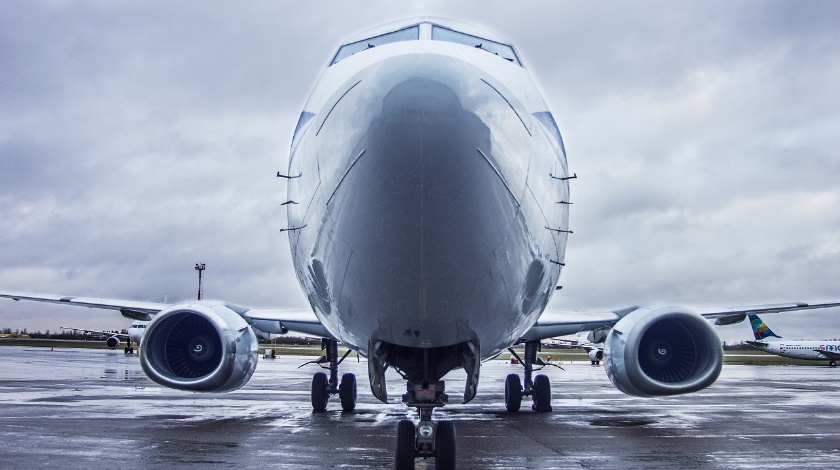Photo: AviaAM Leasing
Reading Time: 4 minutesThe civil aviation market is expected to grow by 5% annually, creating the demand for around 40,000 aircraft in the next two decades, according to estimates of both Airbus and Boeing. This provides plenty of opportunities for lessors, but the aircraft leasing market is a highly competitive field, and high returns are not always possible. How to be successful in such a challenging market? AviaAM Leasing, one of the world’s TOP50 aircraft lessors, shares insights on the basic principles of aircraft asset management that help to achieve higher Return on Investment (RoI).
Analysis – the most important step
Some years ago, investors could reach 20% returns by investing in brand-new aircraft. But the market has changed since then. Funds that are currently investing in aircraft without having a clear plan for an end-of-life solution, cannot achieve even 15% returns. 10% returns is what most of investors are targeting at the moment, but this is definitely not the limit.
AviaAM’s experience shows that higher returns are possible in high-risk markets if you are ready to walk the extra mile.
“Perhaps the most important phase of any aircraft purchase is initial analysis and business plan structuring,” Jonas Juodagalvis says.
“Before purchasing any used aircraft you have to analyze the asset and foresee its potential for the next 10-12 years. For used aircraft, several leasing periods and a clear plan for its components should be considered.”
Initial analysis must be approached with absolute seriousness, says Klaus Kreher, Senior Consultant at Lufthansa Consulting.
“In addition to the long term value creation perspective, we recommend that clients look at the factors that may impact aircraft residue,” Kreher thinks.
“The major basic concerns are the asset’s competitive products, user diversity, country diversity, total number of aircraft sold and market share of the assets.”
“Cutting corners at the initial decision-making stage and business case modeling is not the right approach. Careful decision-making is what distinguishes AviaAM Leasing from other companies,” Jonas Juodagalvis of AviaAM Leasing continues.
“We meticulously analyze possible risks and market potentials in order to understand the prospects for each aircraft and components after 10-12 years or even further down the road, based on our expertise.”
How to achieve maximum RoI?
We can distinguish between two common approaches to asset management, both relying on administrating the aircraft for the longest time possible. The choice is between purchasing brand-new aircraft and controlling it through all of its lifespan, or by buying pre-owned aircraft and leasing it for one or several lease terms before the end of its lifecycle.
“From investors focused on new generation equipment with top tier credits, to investors running end-of-life aircraft into part-out or cargo conversion, there are returns to be made in all areas,” Rob Watts, VP Financial Solutions at Aerotask, says.
“The skills required to succeed in each market segment however, are very different. Success in the new generation segment is driven largely by cost of funding, whereas success in the end-of-life market is driven largely by technical expertise. I would say however, that the market for new generation aircraft offers much more predictable returns, but does not offer the upside potential that can be found in the mid to end-of-life market; where higher returns can be found, but at higher levels of risk.”
Large leasing companies tend to buy an airplane and maintain it up until disassembly. Buying new aircraft and administrating it for the entire lifecycle allows ensuring the control of its condition and maintenance status. It also allows to profit from taking the plane apart at the end of its lifecycle. This is what such leasing companies as GECAS or AerCap have been doing rather well for decades now.
Another approach is purchasing used aircraft and leasing it for more than one term. This approach also allows increasing returns by dealing its parts (engines, chassis, etc.). Of course, proper maintenance throughout the multiple lease terms is crucial.
“The asset is the aircraft itself, tools, equipment and spare materials,” Haihong Xu, Senior Consultant at Lufthansa Consulting, says. “It has to be considered as a total volume, especially after returning the aircraft the lease term has ended.”
Many leasing companies that work with used aircraft do not realize the full potential. While buying and leasing out mid-age aircraft, they lack the experience and specialists with the right knowledge on how to manage and sell the parts of a plane.
“They miss an opportunity for additional profit,” Juodagalvis says.
“To provide really good returns for the investors, you should not avoid this responsibility and risks attached to it. Whatever the age of the plane, you need to turn a profit from its parts as well.”
A 20% RoI is more difficult to achieve with new aircraft. The truth is, higher returns come from older aircraft.
“Of course, there are additional issues with financing and leasing older aircraft, but the fact is older aircraft provide better returns. This is how you reach up to 20% RoI.”
Truly high returns are usually achieved in the more challenging markets and these are the markets AviaAM Leasing focuses on.
“We always manage the full lifespan of an asset for as long as possible, because it allows achieving better returns,” Juodagalvis concludes.
“Other companies owning a 12-year-old aircraft, lease it for one term and then sell it to part-out companies. We, on the other hand, lease it at least for a couple of terms and ensure that the asset finishes its lifespan in the components market. This means that we prolong the lifespan of an asset by leasing it and then we ensure maximum returns from its components by selling or leasing them.”

